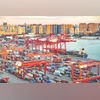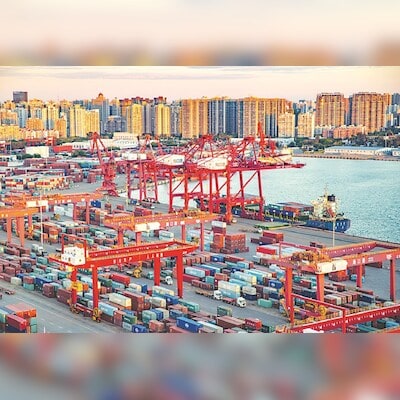[ad_1]
)
Chinese exporters are selling products at give-away prices as its domestic market is struggling with low demand. (Representational Photo)
To mitigate the impact on domestic manufacturers and prevent job losses, Southeast Asian nations are increasing tariffs on cheap Chinese imports.
This move follows pushback from domestic retailers and manufacturers in Thailand, Indonesia, and Malaysia. Economic discontent towards China has intensified in these nations, as Chinese companies, burdened with surplus inventory, are selling goods at rock-bottom prices.
The issue has been exacerbated by the rise of e-commerce platforms such as Singapore’s Shopee, Alibaba-owned Lazada, and ByteDance’s TikTok Shop, which provide Chinese exporters with a new avenue to reach Southeast Asian consumers.
China’s ‘problem of plenty’
China is experiencing a surplus of goods due to reduced demand and a crisis in its real estate sector. Consequently, exporters are selling products at give-away prices. This has further widened Southeast Asia’s trade imbalance with China, prompting manufacturers in these nations to call for government intervention on Chinese imports.
Southeast Asia’s trade deficit with China
Thailand’s trade deficit with China rose to $36.6 billion in 2023 from $20 billion in 2020. Similarly, Malaysia’s trade deficit with China grew from $3.1 billion to $14.2 billion over the same period. Indonesia accrued a $5 billion deficit in non-oil and gas trade with China in the first half of 2024.
Not only ASEAN nations, but South Korea is also bearing the brunt of cheap Chinese exports. In 2023, South Korea recorded its first trade deficit with China in 31 years. Nearly 1,000 South Korean companies filed for bankruptcy in the first half of the year, up from 724 in the same period the previous year. Economic observers attribute this rise to the influx of Chinese imports.
The Indian story is no different, as it continues to grapple with cheap Chinese steel imports. India’s steel ministry has recently asked the Union commerce and industry ministry to investigate cheaper steel imports from China. Domestic steelmakers have reportedly informed the Indian government that they cannot match the prices of Chinese steel, which is heavily subsidised by the Chinese government.
Pushback against Chinese exports
While Western nations are already experimenting with their China+1 strategy to reduce dependence on the dragon, Southeast Asian nations are also exploring ways to protect themselves from the deluge of Chinese exports.
Thailand is planning to review the China-ASEAN free trade agreement and the Regional Comprehensive Economic Partnership (RCEP). The Malaysian government is also assessing the adequacy of the country’s anti-dumping laws. Similarly, Indonesia is prioritising its national interests.
The Indian government is considering extending the anti-subsidy duties already imposed on welded stainless steel pipes and tubes from China.
These steps assume significance as Southeast Asia and other emerging Asian markets accounted for around one-third of China’s exports in 2022, according to a Nikkei Asia report quoting calculations by Goldman Sachs economists.
Now, the big unknown is how Beijing might retaliate against these protectionist policies.
First Published: Aug 02 2024 | 11:47 AM IS
[ad_2]
Source link

